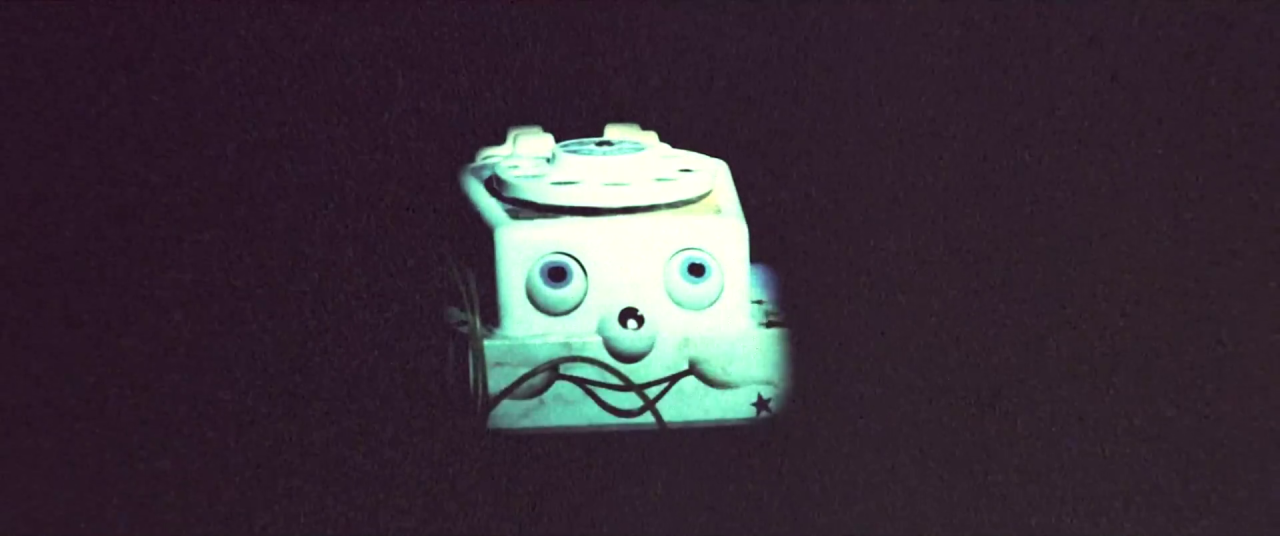“Skinamarink:” the terrifying indie phenomenon that you shouldn’t miss
Kyle Edward Ball’s micro-budget directorial debut is a deeply disquieting and wholly singular work of horror filmmaking.
January 24, 2023
Horror as a genre is at its most potent when it works with simplicity. Monstrous creatures or scuzzy splatter effects may have their own subjective impact on the viewer, but there’s a universality to the uncanny and the unknown, about not fully understanding but instead just knowing, feeling that something is off or wrong in some way. It’s the component that makes the barebones form of “The Blair Witch Project,” the surrealism found in David Lynch’s “Twin Peaks” and “Inland Empire,” a couple of analog horror webseries like “The Mandela Catalogue” and “Local 58” and, most newly, Kyle Edward Ball’s “Skinamarink” so effective. But for all of the minimalist mannerisms and creepypasta-like trappings it may share with those works that are likely rooted somewhere deep within its own DNA, trying to compare “Skinamarink” to any other piece of media that currently exists would be reductive and futile. Here is an extraordinary horror film that doesn’t feel like a recreation of a nightmare so much as it does a direct extraction of one from the inner mechanisms of the human mind—and for those who can find their way onto its exacting wavelength, a truly petrifying one at that.
Of course, that concept is more or less where the project started in the first place. Ball created Bitesized Nightmares, a series of horror shorts based on the bad dreams that viewers remembered from their childhood, and through all of the submissions that spawned the 39 titular videos uploaded on the channel over the course of exactly four years, there was one recurring nightmare that stuck out to him: “I’m between the ages of six and 10, my parents are dead or missing, and there’s a monster.” A proof of concept film, a crowdfunded micro-budget of $15,000 dollars and eight days of shooting in his own childhood home with a skeleton crew later, and the result is probably the single most potent and paralyzing audiovisual realization of dream logic I’ve ever experienced.

The film follows four-year-old Kevin (played by Lucas Paul) and his six-year-old sister Kaylee (played by Dali Rose Tetreault), who wake up in the middle of the night to find that not only are their parents (played by Ross Paul and Jaime Hill) missing, but all of the doors and windows in their home along with them, and it’s not long before it becomes clear that whatever is causing these inexplicable phenomena is in the house with them. I’d say I’m being light on details, but as far as story goes, there’s really not a whole lot to tell in the first place. “Skinamarink” is a film that demands the viewer deliberately tune in to its impenetrable narrative only to ensnare them in it—there comes a point where the idea of what could be in the dark stops being mysterious or compelling and mutates into an unrelenting, dread-inducing assault on the senses and mind.
If the premise is bafflingly simple, though, the execution certainly isn’t. The way Ball frames the rooms in the house and the kids through almost nothing other than extreme, obtuse angles that reduce them to the corners of the ceiling and endless expanses of carpet dotted with block toys disorients the audience and disrupts the spatial awareness and geography of its setting, both evoking and inverting the meticulously impossible floor plans of the Overlook Hotel in “The Shining.” All of it is drowned in a layer of heavy artificial film grain, which may seem like an overbearing, gimmicky aesthetic choice, but the filter works as an all-consuming sea of shadows that immediately renders whatever the mind conjures outside of the frame sinister. After a while, it even starts to play tricks on what the audience can make out within it—the organic pattern creates an endless amount of seemingly invisible movements in the darkness, restraining the viewer’s eyes from ever adjusting to it, which only makes the moments where images and figures do emerge, particularly in its truly masterful final shot, all the more unnerving.

Having been lucky enough to see the film multiple times, not only does the labyrinthine narrative of “Skinamarink” reveal itself much more straightforwardly—if still rather inscrutably— on a rewatch, but it becomes secondary to just how deeply saddening and haunting its trajectory is on a thematic and conceptual level. Even though it, like most everything else in the film, is left in scattered bits and pieces for the viewer to pick up, the familial dynamics that we’re given scattered glimpses of throughout the film, from the early interactions between Kevin and Kaylee to the implications of child/domestic abuse and abandonment, are what elevate it from simply being an effectively structured series of scares into a more intimate, devastating work of horror.
That a film this heavily experimental and small in scope being given such a wide theatrical release—and especially that it’s made nearly 100 times its budget at the box office—is obviously remarkable but I can’t help but feel that “Skinamarink” is a film that’s, much like Ball’s sole description of his own Bitesized Nightmares, best watched alone at night on a laptop “with the lights off and headphones on.” Mileage will undoubtedly, heavily vary, but there’s no denying that “Skinamarink” is one of the most wholly singular works in the horror genre and modern cinema as a whole.
96/100
“Skinamarink” is now playing in theaters and will be available to stream exclusively on Shudder starting 2 February 2023.


